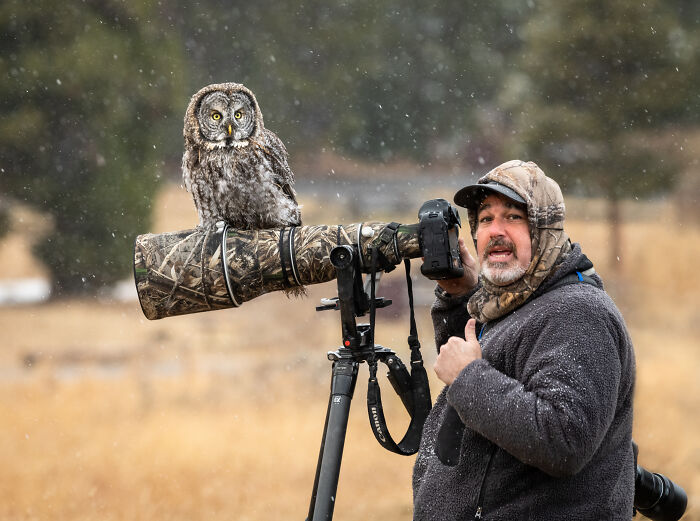@Steve if this becomes contentious, please delete the post. I don't want to start an argument just a discussion. As background, my wife and I were photographing at a nearby national wildlife refuge. We were there mainly to see the resident river otters and get some photos which we did. It was tough heat shimmer conditions but we managed a couple. Upon moving on down the road, we saw a couple cars parked along the road. Looking into the woods, there was an Eastern Screech Owl sleeping n a tree hole. Very cute. Our car heater was already off so we shot a few out the window. Seeing we still had heat shimmer, we went to the other side of the road (well more like a gravel goat path) and stood behind the vehicle so the vehicle was between us and the owl. The idea was to not disturb it any more than our car going down a dusty road may have. The other photographers in the cars did much the same. As we started to move on, a car pulled up and two people got out and went to the edge of the woods about 25 feet from where the owl was sleeping and they were not being very stealthy. We drove a couple hundred yards down the road to see what would happen. About 5 minutes later, another car pulled up and 2 more people got out and walked even closer than the first 2 people (and later as we were coming back from the other end of the refuge, yet another car was there with 2 people even more in the woods).
I have photos below of an un-cropped out of camera jpg, a processed RAW file and some photos of the individuals. Because I do not know who they are and they may even be members here, I have smudged out all parts of the photo where the people could be recognizable. The intent here is not to "shame" anyone or to call anyone out.
The questions are when are we too close? I don't want the entire ethics debate here there are plenty of places to find that discussion on-line and recreating it here doesn't create good will among friends. What I do want to talk about is "optics" of photographers getting close enough to wildlife that it can appear to be harassment or bothering the animals. I'm quite sure the people who got 15 feet from the owl got better and more clear photos than I did. However, if a ranger or conservation officer were to happen by I'm sure he/she would have told the people to get back to the road.
Perhaps by going to the other side of the "road" I was being overly cautious but I figured 20 feet farther away wasn't going to make that much difference. After all, it was a screech owl sleeping in a tree. It wasn't a "National Geographic Cover" shot regardless of how close.
What say you?
Here are my photos of the scene.
Straight out of camera untouched.
View attachment 31765
Cropped and moderately edited from RAW file.
View attachment 31766
First 2 people. The red circle is where the owl was sleeping.
View attachment 31767
Next group of people even closer. (no it's not Sasquatch although I may be able to sell this photo as a pair of Sasquatch after I've appropriately blurred the background too... but that's a different topic).
View attachment 31768



